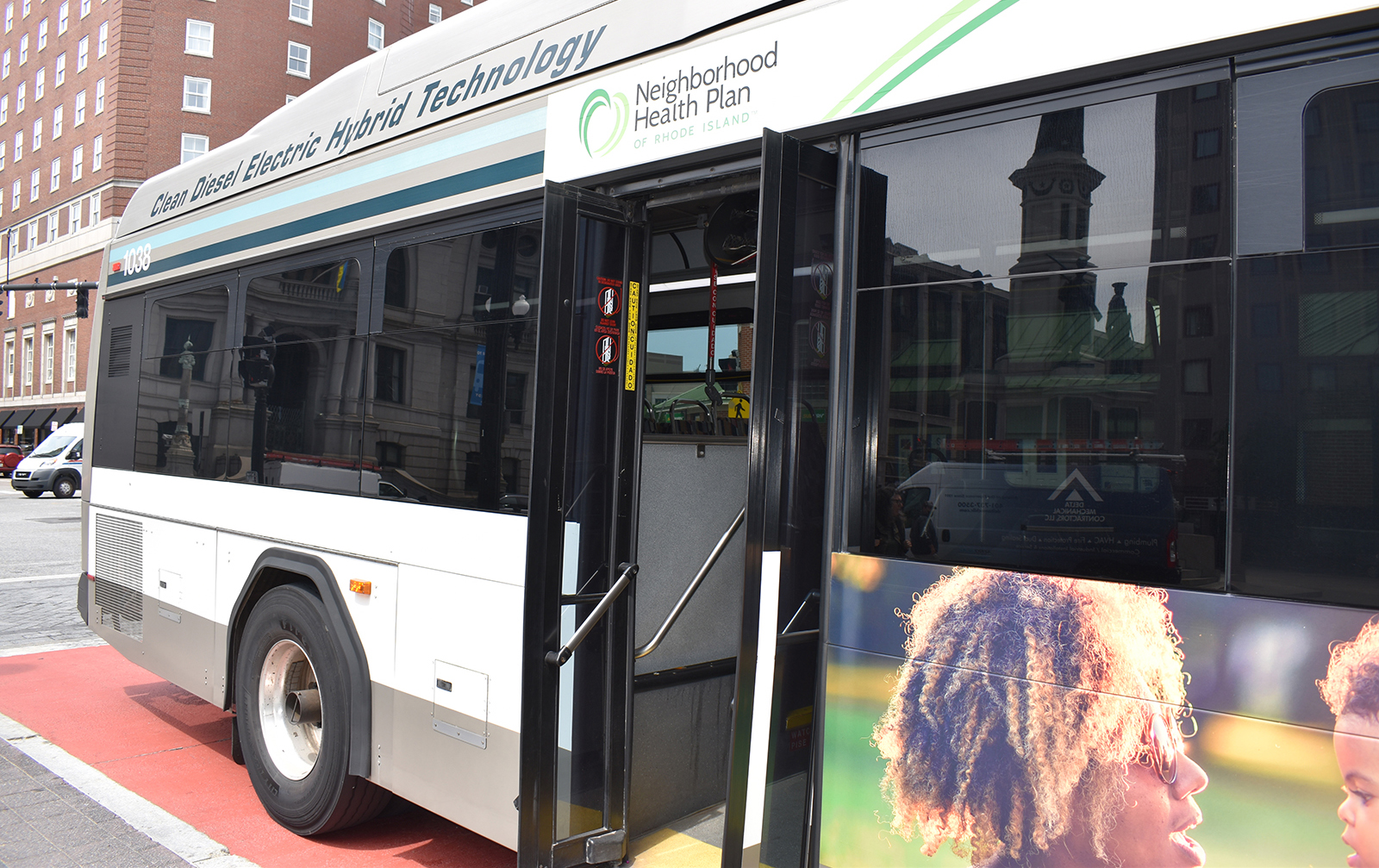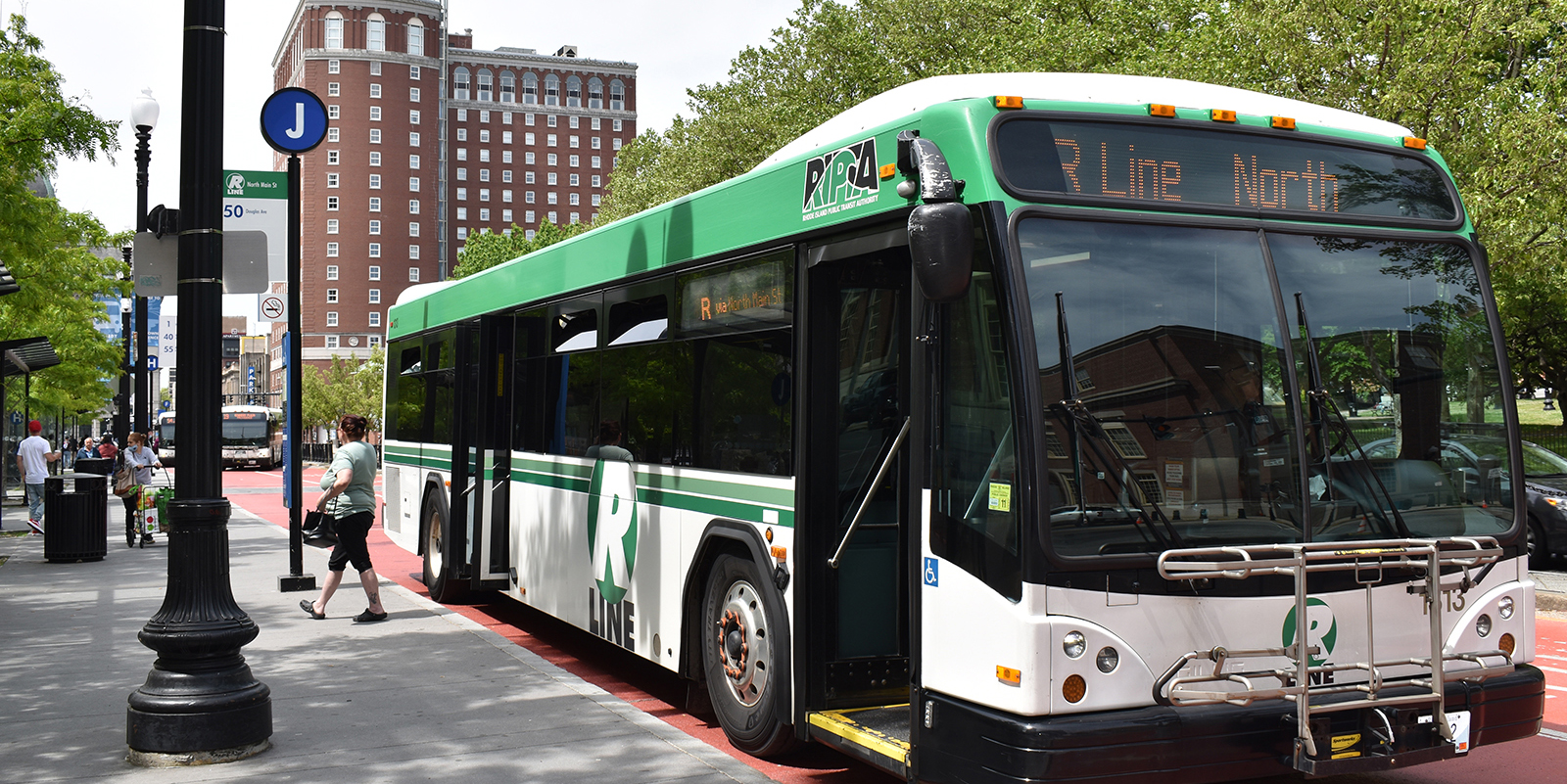Improving Public Transit Options Takes Good Dancers
Massachusetts advocate gives Rhode Island some tips
October 28, 2015
PROVIDENCE — With election fever afflicting the American public, Steven Miller recently outlined a presidential platform that would be easy to support: He would make the population healthier; reduce extravagant health-care bills; lower death rates on the streets; get kids to do better in school; clean up our air; and help local businesses thrive.
He made his presidential pledge Oct. 7 before a small audience assembled at AS220’s gallery space on Empire Street. The silver-bullet solution to each hypothetical campaign promise is to design streets that are safe to walk, run and bike on, according to Miller, co-founder and board member of the Boston-based LivableStreets Alliance. Physical activity — and the streets that promote it — are proven to deliver on each of these goals, he said.
The problem is that roads are generally designed to accommodate one mode of transportation: cars. According to Miller, cars have been idealized in the United States since the 1920s as the ticket to freedom and the best way to explore a vast country. As the 20th century progressed, cars went from being rare luxuries to commonplace. People could move about more freely, causing suburbs to expand and the population to become more disperse.
As a result, roads began to favor speedy, long-distance car travel over other means of transportation, such as biking, that became less relevant as commuters traveled farther to get to work and the places they shopped. Walkable and bikeable downtown business districts were abandoned in favor of strip-mall highways with convenient parking for cars, but are practically inaccessible by foot. Even in city centers, highways and highway-design principals replaced traditional urban streets.
“For 50 years, traffic engineers felt that every driveway wanted to grow up to be I-95,” Miller said.
He said the result of the past century of development is “enormous congestion.”
Miller likens the U.S. transportation system and its associated traffic to a watershed. Drops of water travel downhill from “the hinterlands.” They gather and combine to form streams, and streams become rivers.
“All of the sudden, you have a raging torrent, and if you try to constrict that torrent — like, at a bridge that goes in and out of a city — suddenly you have waterfalls and crazy turbulence. You have congestion,” he said. “The bad news is that congestion is not going away. It’s going to get worse until we radically redistribute our population.”
The amount of miles driven per individual has decreased during the past 10 years, but the reduction has been offset by a growing population and families investing in second and third cars. All these cars, traveling on the roads at the same peak hours, will continue to cause congestion for the foreseeable future, according to Miller.
“It’s going to get worse, probably for the rest of our lives,” he said. “So what do we do about it?”
Miller said meaningful change can be achieved by creating infrastructure that supports alternatives to car-based transportation — walking, biking and public transit, each of which also offers health and economic benefits.
“We are talking about liberating ourselves from the trap we have allowed ourselves to get into,” he said. “There is no (car-based) solution to the problems created by the car.”
‘The Advocacy Waltz’
Realizing these alternatives will take intensive and well-planned advocacy. Miller describes advocacy as a waltz. On one side are the three phases of advocacy: protesting, pushing and partnering.
Protest allows people without power or money to join the conversation and be heard, he said. “It’s always easier to keep doing what you were doing, but if you want to stop the machine you’ve got to shout and stick something in the gears,” Miller said.
Pushing, the second step, means offering desired solutions to the status quo such as policy changes. “Protest disrupts business as usual and makes it impossible for what has always been done to happen again,” said Miller, noting that without pushing preferred alternatives it doesn’t automatically lead to constructive changes.
Pushing is most effective when there are larger trends moving in the same direction, according to Miller. “The reason walking and biking are now viable to ask for is because congestion is terrible,” he said. “It’s because business owners understand that it doesn’t make a difference to have a parking spot in front of your store if no one can get to it.”
Once the city or state agrees to the ideas being pushed, advocates must partner with the city or state to ensure their goals are achieved. “This is complicated because once you’re on the inside, it’s much harder to say, ‘You guys are messing up,’” Miller said.
As a partner, advocates must be sure to appreciate and thank officials when they do something right, but continue to nudge them for more and better. At this point, the state or city’s success is the advocates’ success, so they should find ways to help each other, Miller said.
“Some advocacy movements split (at the partnering phase), where some people stay outside and throw rocks and yell, while some people become assistant secretaries on the inside,” he said. “Being able to play all three advocacy roles takes a lot of flexibility and creativity and not every movement pulls it off.”
Continuing his waltz analogy, Miller highlighted the four tasks required of advocates that must occur in unison with the three-phase arc of protesting, pushing and partnering. Advocates must generate political will, help to develop capacity, acknowledge accomplishments and ensure whatever their advocacy has resulted in becomes permanent, rather than a fleeting pilot project, he said.
To generate political will, Miller said advocates need to prove to politicians that it is in their interest to do what they are asking. “You have to understand their self-interest,” he said.
According to Miller, all politicians have an agenda when they enter office, such as improving education or safety, or making businesses more prosperous. Advocates must identify how their issue is part of a politician’s agenda and how it can help the politician achieve his or her vision.
Often, cities or states aren’t capable of achieving what advocates demand, so advocates must help the city or state succeed by building capacity. In his own experience, Miller said that after Boston agreed to begin including bike lanes on its streets it became clear that the city’s go-to engineers didn’t have the know-how to do so effectively. Miller, along with other advocates, helped the city attract out-of-state consultants with the appropriate experience to ensure bike lanes would be a success instead of a failure.
Miller said many projects are implemented as pilot programs. By nature, these programs are easily displaced when new officials take office and want to implement their own special projects. Miller said advocates have to ensure their pilot programs become integrated into the core activities of the government or organization.
Pilots and paradigm shifts
Miller said pilot programs in multi-modal street design can be achieved on the cheap using road paint and planters or plastic bollards to block off and redirect traffic.
“I would suggest we do a thousand more pilots in street design,” he said. “If some don’t work, take them down. If they do work, you’ve proved your point.”
One interesting pilot idea suggested by Miller during his presentation was to visit intersections after a light snow to see where drivers have made lanes for themselves by observing their tire tracks.
“At almost every intersection, two-thirds of the space that we have reserved for cars will still be covered in snow,” he said.
Miller suggested placing planters around where the snow is and setting up a few chairs. Then, in the spring, “suddenly you have a little plaza. Add an ice cream vendor and you have a park.”
He also discussed the need for Rhode Island’s transit agencies and departments to undergo a paradigm shift. Currently, he said, roads are designed to work for cars first, then for pedestrians, cyclists and transit users if there is still room.
Instead, he said, the default needs to be a requirement to include accommodations for pedestrians, cyclists and transit users. Then, if the engineers can’t achieve this standard, they apply for an exception.
“It means tradeoffs, and not everyone gets what they want, including bikers, pedestrians, transit users and cars,” Miller said.
In Massachusetts such a system already exists. Road engineers are expected to design multi-modal transportation infrastructure, and when they can’t, their request for an exception is reviewed by an exception review committee. The committee studies the plans and either grants the exemption, or makes recommendations about how the design should be changed to accommodate non-car users.
Miller said transit reform will require significant grassroots advocacy in every municipality in the state. People need to communicate with each other and demand that they be empowered by the state and municipality to look at all traffic plans prior to their implementation, he said.
“Every town has some doctor who knows walking is good. Every town has a public health commissioner or officer who knows that preventative medicine is better than paying the bill at the end. Every town has teachers that know that a kid who walks to school comes ready to learn,” he said. “How do you mobilize those people and build a local coalition.”



